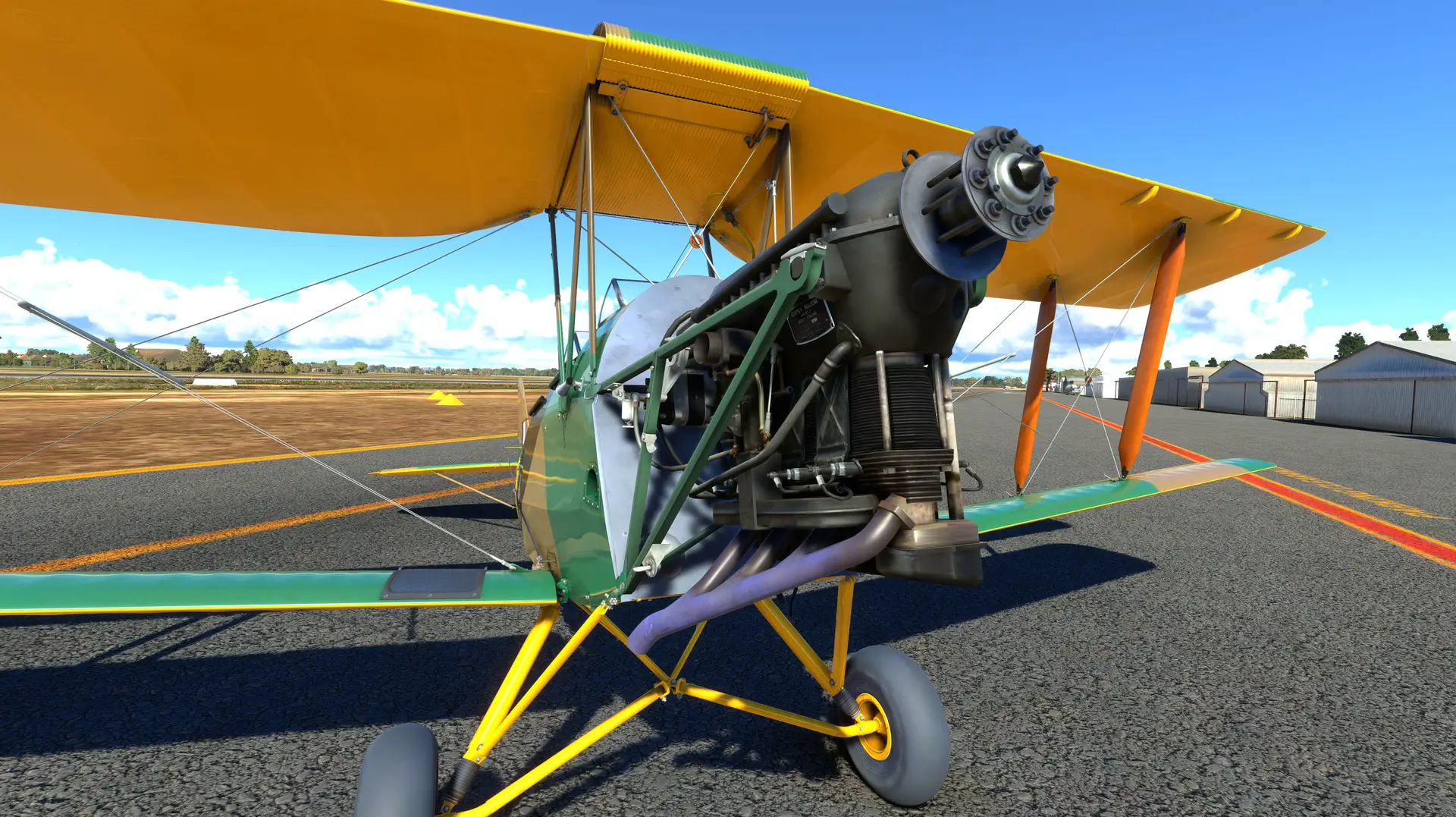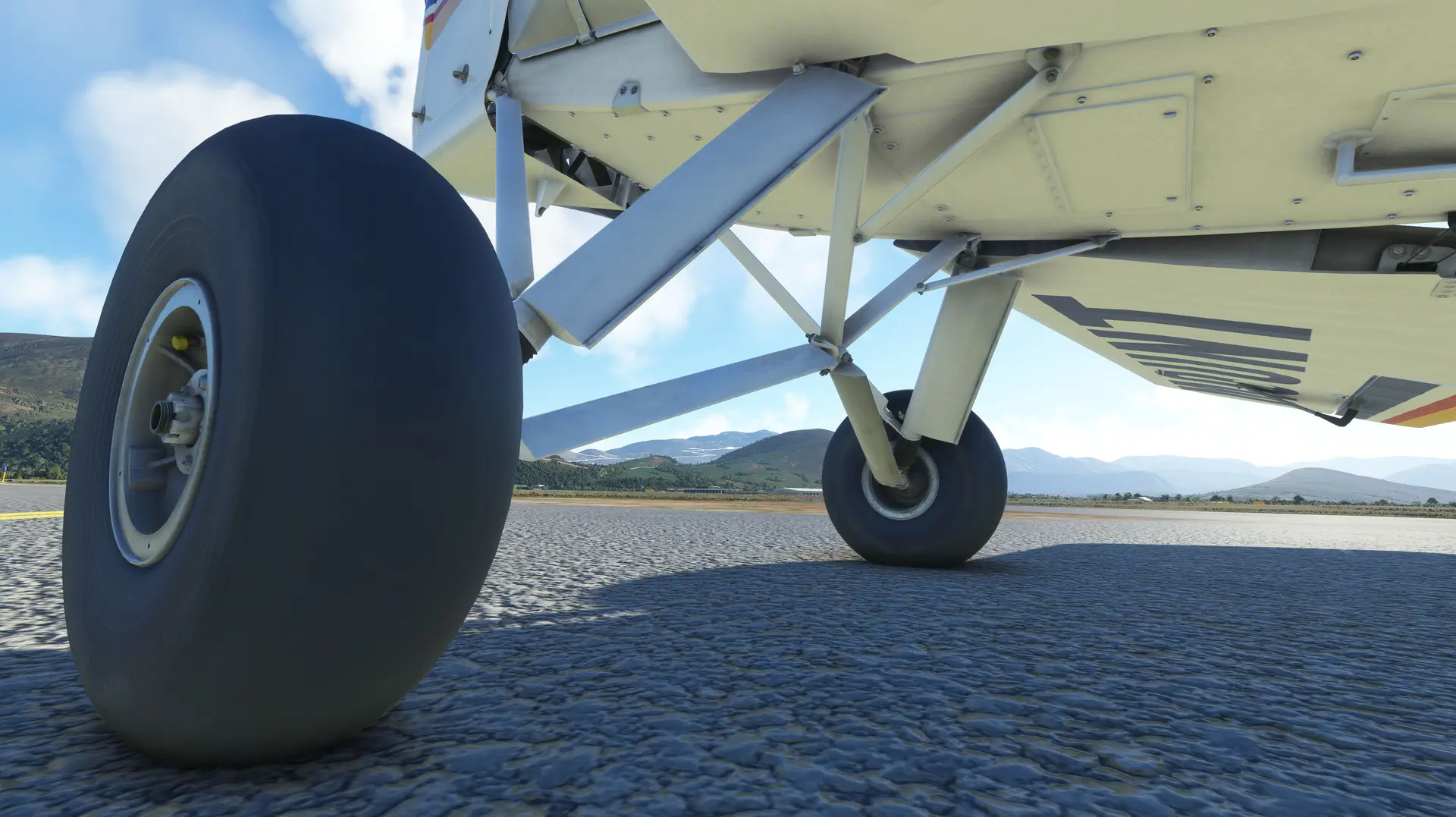- USD 17.99
- -33%
- USD 17.99
- USD 11.99
- Sale Ends: January 7 2026 6:00 PM +00:00
- View more offers at FS Addon Compare
- Added: October 13, 2022
- Updated: January 23, 2025
The de Havilland DH82 Tiger Moth is a 1930's British biplane and quickly became the primary trainer for the Royal Air Force (RAF). The Tiger Moth was a commercial success with aircraft being sold to over 25 air forces around the world (mostly Commonwealth countries such as Australia, Canada and New Zealand).
Production started in 1931 and by the start of Second World War over 1,400 Tiger Moths had been produced. Overseas production commenced in 1937 with Canada producing the DH82C variant. During the war mass production of the Tiger Moth was undertaken in Britain, Australia, Canada and New Zealand. Nearly 9,000 Tiger Moths were produced and at the end of the war many of these were sold to civilians as surplus being used as trainers in flying clubs or converted to agricultural crop dusters. Even today, around 650 Tiger Moths are still flying.
The Tiger Moth is a single-engined, two-seat biplane with a fuselage constructed of steel tubing. The wings and empennage are constructed from wood with the aircraft covered in fabric. The wooden fixed pitch propeller is powered by a 130hp Gipsy Major inverted 4 cylinder in-line engine.
This simulation is based on an Australian Tiger Moth and has the following features:
- Fully modelled aircraft including the engine and pilot and copilot models
- Full checklists in MSFS
- Includes 10 different repaints
- Full manual engine start procedure including engine priming and propeller pull
- Autostart is supported for those who would like a quick engine start
- Select Easy or Hard engine realism. In Hard mode oil consumption can lead to engine failure, sparkplug fouling is simulated and the engine must be properly primed to start
- High FPS propeller animation. Custom code provides the smoothest possible propeller animation including accurate propeller stopping animations
- Oil consumption. Old aircraft consume lots of oil and the Tiger Moth is no exception. Set oil levels in the fuel and payload screen. In Hard engine realism mode low oil levels will lead to eventual engine failure
- Sparkplug fouling in Hard engine realism mode. If the engine is below 900 rpm carbon deposits will build up and affect engine performance.
- Persistent fuel and oil levels. Automatically saves the fuel and oil levels at the end of each flight and reloads them on the next flight (can be turned off)
- GPS available. The default Aera GPS is available as a popup which can be placed into various positions within the cockpit depending on the user's needs
- Tablet available. A popup tablet provides access to user preferences as well as a simple autopilot and radios if required. A page for the manual engine start procedure makes it easy to see the state of the aircraft
- User preferences. Various user preferences are automatically saved at the end of each flight. User preferences can be set either by clicking on items in the cockpit or by using the Tablet popup
- Set the appearance of such things as the air intake type, pitot tube style, venturi location, show/hide the windy airspeed gauge etc.
- Select either tail skid or tail wheel
- Customisable instruments. Select from 3 different types of airspeed gauge, 2 styles of altimeter and adjust the rotation angle of the engine RPM gauge
- Removable engine cowlings and prop. On the ground the engine cowlings and propeller may be removed for inspection/maintenance/screenshots
- Windscreen transparency. Switch between clean and dirty windscreens directly in game
- Pilot's Handbook PDF is available in the package's Documentation folder























